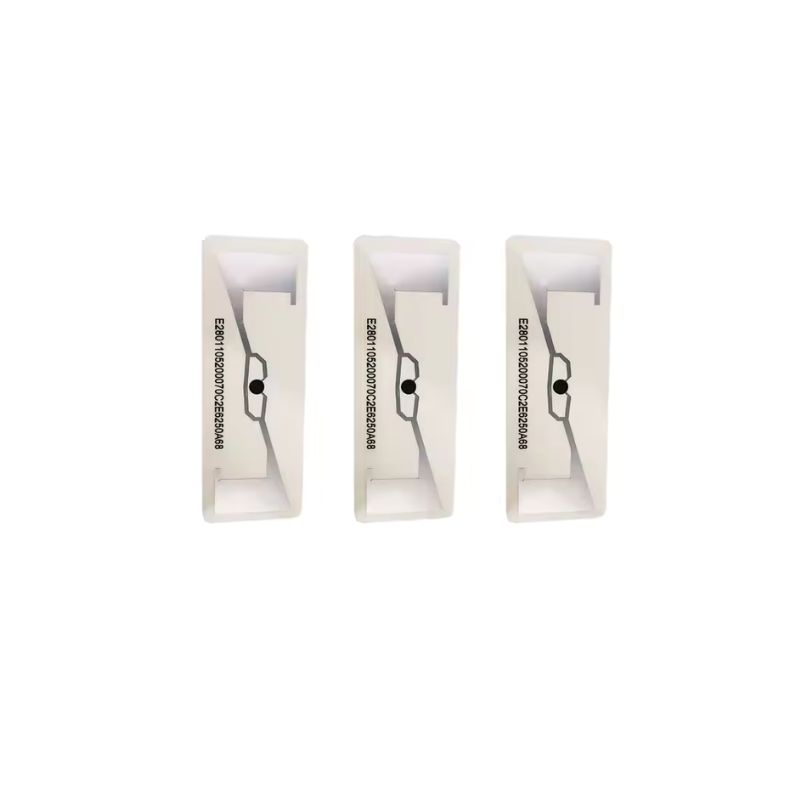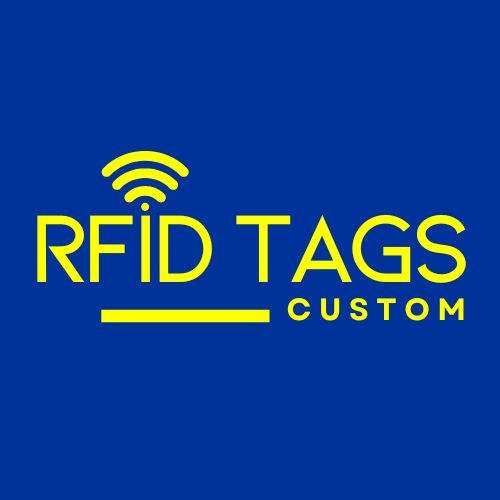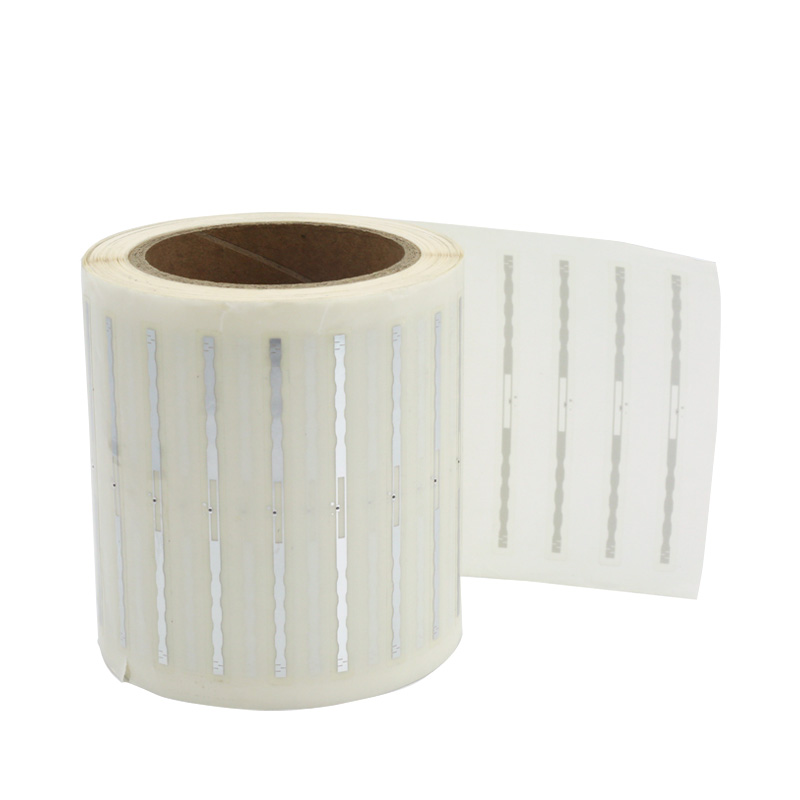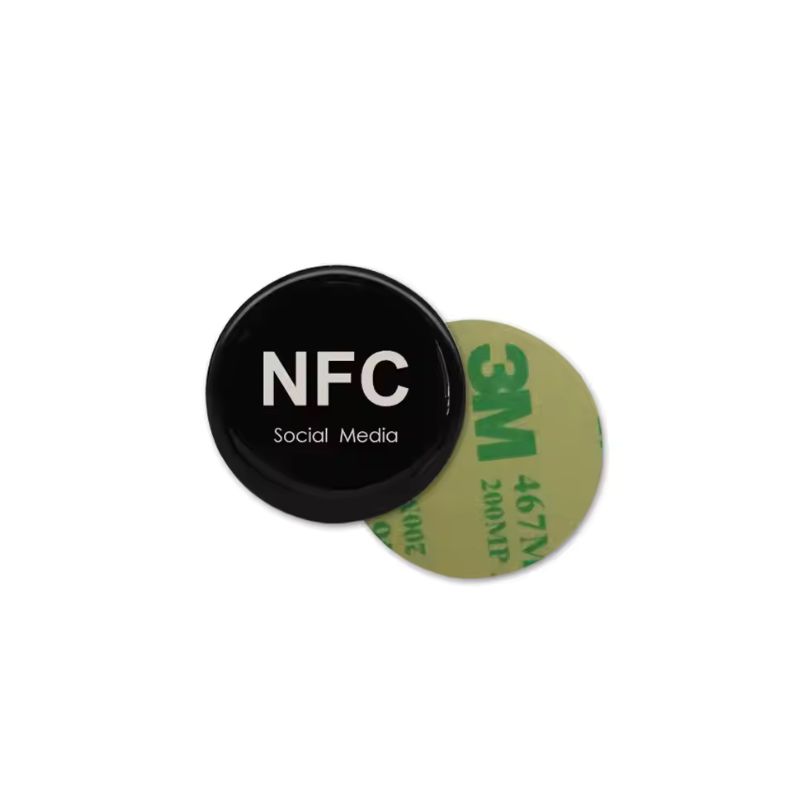
Etykiety do śledzenia bagażu RFID na lotniskach dalekiego zasięgu
Znaczniki RFID dalekiego zasięgu do śledzenia bagażu - inteligentne zarządzanie bagażem na nowoczesnych lotniskach
Zmniejszenie liczby niewłaściwie obsługiwanych bagaży. Poprawa komfortu pasażerów. Automatyzacja przepływu bagażu.
Zagubiony lub opóźniony bagaż nadal kosztuje linie lotnicze i lotniska miliardy rocznie - wpływając na wydajność operacyjną i zadowolenie podróżnych. Nasze urządzenia UHF Etykiety RFID do śledzenia bagażu zostały stworzone specjalnie z myślą o środowiskach lotniskowych, oferując niezrównaną dokładność skanowania, trwałość i integrację z globalnymi systemami obsługi bagażu.
Od odprawy po odbiór bagażu, te tagi RFID zapewniają widoczność w czasie rzeczywistym w każdym punkcie podróży bagażowej - wspierając globalne standardy, takie jak IATA Resolution 753 i umożliwiając płynniejszą, inteligentniejszą podróż.
Dlaczego identyfikatory RFID przewyższają tradycyjne kody kreskowe?
Systemy oparte na kodach kreskowych cierpią z powodu ograniczeń widoczności, rozmazywania i błędnych odczytów. W przeciwieństwie do tego, nasze tagi bagażowe RFID UHF:
- Możliwość skanowania poza linią wzroku z odległości do ponad 8 metrów
- Przetwarzanie wielu tagów jednocześnie (idealne do sortowania bagażu luzem)
- Oferowanie danych śledzenia w czasie rzeczywistym liniom lotniczym, lotniskom i pasażerom
- Integracja z istniejącą infrastrukturą i standardami RFID na lotniskach
Korzyści te skutkują szybszym przetwarzaniem, mniejszą liczbą błędów, niższymi kosztami operacyjnymi - i co najważniejsze - szczęśliwszymi pasażerami.
Aplikacje: Przywieszki bagażowe RFID zasilają inteligentne lotnisko
Nasze znaczniki RFID do śledzenia bagażu zostały stworzone w celu zwiększenia wydajności wśród wielu interesariuszy:
- Linie lotnicze - Mniej zagubionych bagaży, aktualizacje śledzenia w czasie rzeczywistym, lepsza obsługa klienta
- Lotniska - Większa przepustowość BHS, większa automatyzacja, zgodność z mandatami IATA
- Obsługa naziemna - Szybsze sortowanie bagażu, mniej błędów ludzkich
- Pasażerowie - Spokój ducha dzięki dokładnej, aktualnej lokalizacji bagażu
Niezależnie od tego, czy zarządzasz dużym terminalem międzynarodowym, czy regionalnym węzłem komunikacyjnym, nasze tagi pomagają zmodernizować operacje bagażowe, jednocześnie obniżając koszty i budując zaufanie marki.
Dane techniczne
| Funkcja | Specyfikacja |
| Tworzywo | Wytrzymały papier lub syntetyczny materiał wierzchni (z możliwością dostosowania) |
| Spoiwo | Trwały klej o wysokiej przyczepności do mocnego mocowania bagażu |
| Rozmiar | Standard IATA: ~54 mm x 152 mm (lub niestandardowe rozmiary) |
| Opcje żetonów | Impinj Monza R6/R6-P, NXP UCODE 7/8/9 |
| Częstotliwość | UHF (860-960 MHz, globalnie) |
| Protokół | EPCglobal Class 1 Gen2 (ISO 18000-6C) |
| Odczyt zakresu | Do 8+ metrów (w zależności od czytnika/środowiska) |
| Temperatura pracy. | -20°C do +70°C |
| Odporność na warunki środowiskowe | Wilgoć, ścieranie, zginanie, naprężenia BHS |
| Opcje drukowania | Branding linii lotniczych, kody kreskowe, zmienny tekst |
| Przechowywanie danych | Ponad 10 lat |
| Pamięć | Pamięć EPC (96-128 bitów), opcjonalna pamięć użytkownika |
Zacznij przekształcać swoje operacje bagażowe już dziś
Lotniska i linie lotnicze na całym świecie ufają naszym znacznikom RFID do śledzenia bagażu, które poprawiają wydajność, obniżają koszty i spełniają wymogi zgodności. Niezależnie od tego, czy dokonujesz modernizacji w celu zapewnienia zgodności z IATA 753, czy też budujesz inteligentniejsze lotnisko, jesteśmy tutaj, aby Ci pomóc.


FAQ
Jaka jest korzyść z używania tagów bagażowych RFID zamiast kodów kreskowych?
Etykiety RFID nie wymagają linii wzroku i mogą być odczytywane automatycznie i masowo, nawet gdy torby są ułożone w stosy lub poruszają się z dużą prędkością. Oferują one większą niezawodność, dokładność i szybkość śledzenia w porównaniu z tradycyjnymi etykietami z kodami kreskowymi.
Czy te znaczniki są zgodne z rezolucją IATA 753?
Tak. Te znaczniki RFID zostały zaprojektowane specjalnie do obsługi śledzenia bagażu zgodnego z IATA 753, pomagając lotniskom i liniom lotniczym zapewnić widoczność bagażu 100% we wszystkich czterech punktach przekazania.
Jak daleko można odczytać tagi bagażowe RFID?
W zależności od środowiska i konfiguracji czytnika, te tagi UHF oferują zasięg odczytu do 8 metrów lub więcej, dzięki czemu nadają się do zautomatyzowanych czytników tunelowych i szybkich sortowników bagażu.
Czy przywieszki bagażowe RFID mogą być drukowane z informacjami o liniach lotniczych?
Tak! Znaczniki te obsługują wstępne drukowanie lub drukowanie na żądanie logo, kodów kreskowych, numerów lotów i danych seryjnych w celu dostosowania do istniejących systemów odprawy linii lotniczych.
Czy tagi RFID nadają się do wielokrotnego użytku do śledzenia bagażu zwrotnego?
Podczas gdy większość przywieszek bagażowych RFID jest przeznaczona do jednorazowego użytku, niektóre modele syntetyczne można dostosować do programów śledzenia i trasowania bagażu.
Zdobądź swoje niestandardowe tagi RFID
Jako wiodący producent niestandardowych tagów RFID, tworzymy rozwiązania oparte na unikalnych potrzebach Twojej działalności. Oferujemy szeroki zakres opcji dostosowywania, w tym materiał, rozmiar, częstotliwość, kodowanie i odległość odczytu, zapewniając, że każdy tag RFID jest idealnie dostosowany do Twoich wymagań. Niezależnie od tego, do jakiego zastosowania używasz tagów RFID, możemy dostarczyć wytrzymałe, niezawodne tagi RFID, które spełniają najwyższe standardy jakości i trwałości. Oto główne sposoby, w jakie dostosowujemy tagi RFID do Twoich potrzeb.

Wybór materiałów
Materiał jest kluczowy dla personalizacji tagów RFID. Plastik sprawdza się w trudnych warunkach, podczas gdy miękkie materiały pasują do delikatnych przestrzeni. Różne materiały również wpływają na wydajność sygnału. Wybierz to, co pasuje do Twojego przypadku użycia, aby mieć pewność, że Twoje tagi będą trwałe i działać niezawodnie.

Niestandardowy rozmiar
Rozmiar kształtuje użyteczność. Małe tagi pasują do ciasnych przestrzeni lub małych przedmiotów, podczas gdy większe tagi są łatwe do odczytania. W zatłoczonych miejscach eleganckie tagi zapobiegają kolizjom. Dopasuj kształt i wymiar do swoich towarów, aby zapewnić widoczność, wygodę i wydajność.

Wymagania częstotliwościowe
Wybierz LF, HF lub UHF w zależności od zasięgu odczytu, prędkości i zakłóceń. LF i HF są odporne na metale i ciecze, ale mają krótszy zasięg. UHF oferuje większy zasięg, ale może napotkać bloki sygnału. Dopasuj częstotliwość do swojego środowiska, aby zapewnić niezawodną wydajność.

Odległość czytania
Określ odległość, z której musisz odczytać tag. Krótkie odległości sprawdzają się w przypadku kas detalicznych, podczas gdy magazyny mogą wymagać metrów zasięgu. Konstrukcja anteny, ustawienia czytnika i wyjścia mocy wpływają na zasięg. Dostosuj te czynniki, aby dokładnie przechwytywać dane z potrzebnej odległości.

Kodować
Zaplanuj, jak dane są przechowywane na każdym tagu. Niektóre zawierają tylko ID, podczas gdy inne zawierają szczegółowe informacje. Zdecyduj, czy potrzebujesz prostego EPC, czy dodatkowej pamięci użytkownika. Upewnij się, że wybrany format działa z istniejącym oprogramowaniem. Prawidłowe kodowanie usprawnia procesy i eliminuje błędy.

Środowisko aplikacji
Weź pod uwagę rzeczywiste warunki. Wahania temperatury, wilgotność i chemikalia mogą powodować degradację tagów. Do użytku na zewnątrz wybierz obudowy odporne na promieniowanie UV. W placówkach służby zdrowia lub w branży spożywczej upewnij się, że przestrzegasz zasad bezpieczeństwa. Dopasowanie tagów do środowiska maksymalizuje ich żywotność.
Produkty powiązane
Dostosuj dowolne tagi RFID z naszej fabryki tak, aby spełniały Twoje wymagania.


